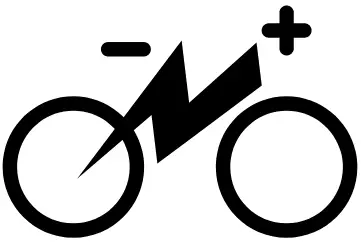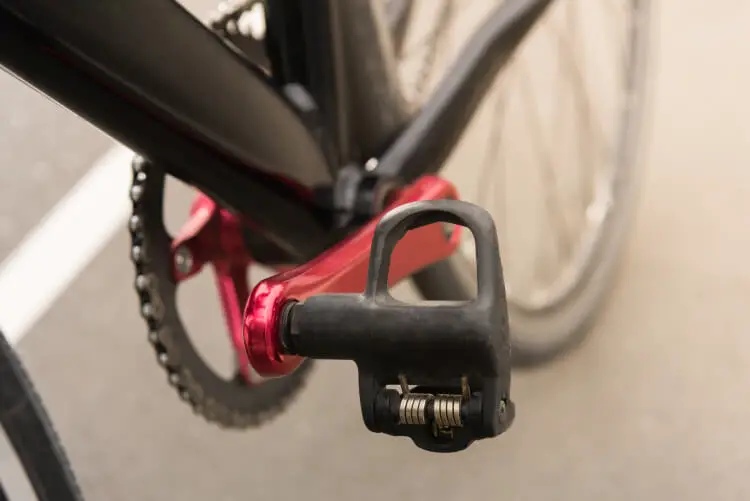If near the end of a long ride, or struggling up an incline you have never wondered just why your bike feels so heavy, then you’re one of the lucky few. Most riders consider weight an important feature when looking to buy a new bike and many cyclists continually look to modify or upgrade parts to make the bike lighter.
Frames and wheels are the obvious parts with the biggest impact due to their size, but you can also make weight savings with a large number of smaller parts.
We hear a lot about the marginal gains that weight saving can have, but can a reduction in weight on something as inconsequential as pedals actually make a noticeable difference?
So, how important is pedal weight? Pedal weight makes a minimal difference not to be worth the cost. There are many other parts of the bike such as tires, frames, and saddles that would be better suited for weight savings. The same weight savings can be achieved by lighter footwear.
Are Lighter Pedals Worth It?
A lighter set of pedals will technically make your bike go faster. It’s a fact that you expend less energy on a lighter bike than a heavier one. However, as the weight range between different pedals is minimal, so will be the benefits of weight savings.
Typically, pedals weigh between 200g and 400g. You can get a low-cost budget pair in this range, as well as models from leading brands such as Shimano. There are lots of different features, designs, and benefits that differentiate pedals. If we look at weight alone there isn’t a huge difference, especially when you consider the cost. While the weight range of pedals is narrow, the price can range from $10 to above $400 which is a lot of money for not much of a weight saving.
Rotating Mass
To understand how weight on the bike affects your ride, it’s worth noting that rotating parts such as tires and wheels require more energy than static parts like saddles as they move independently.
So effectively weight savings on rotating parts, rather than static parts, has greater benefit. While this is a reason to consider wheels, tires, and tubes as potential upgrades, the pedals’ position is close to the crank. This means the rotating mass saving is much less noticeable than on tires or wheels. In fact, the small advantage gained by switching pedals could largely be achieved just as easily by choosing lighter footwear.
Why Pedal Weight Isn’t Important
The desire to look for weight saving through upgrades can become so overly focused that some practical elements can’t be overlooked. It’s worth considering that the amount of water you carry in your water bottle will likely have almost as much impact as an upgrade in pedals.
There are pedals available that will give you more of a weight saving than falls within the typical 200g-400g range. These often are made of carbon or titanium, but the price for these models can often be very high. The Keo Blade Carbon Ceramic Ti pedals, for example, cost as much as $400.
If you race or ride at a level where every gram counts, these would help you offer a genuine but marginal benefit. For the vast majority of riders, there are better parts of the bike to upgrade for bigger gains at a lower cost.
Where Else to Save Weight Instead
Weight can be saved in many different places, but should it be saved? Does lighter always mean better? In the race down the rabbit hole of weight saving, durability can often be overlooked.
Lighter materials usually mean a sacrifice in strength or a hard hit on your wallet. Many cyclists actually prefer to not reduce the weight of a bike so they feel more secure. This, in turn, can give them the confidence to ride faster and push the bike further.
There are also parts of the bike where you should think twice about the trade-off for lighter weight. You could buy aluminum bolts to replace steel for your handlebar stem or seat post clamp, but the possibility of an unpleasant outcome should they break means steel is still the clear winner. Not everything that can be upgraded should be.
Calculating Weight Per Dollar
So where can weight savings be made and at a sensible cost? The Hairsine Ratio, named after a UK mountain biker, who wanted the lightest ride at the lowest cost, is the ratio of weight saved against the likely cost incurred.
The Hairsine Ratio is easy to calculate. Using the tool, you will usually find that tubes and tires are the most effective weight reduction per dollar. Naturally, wheels and frames have the most potential for big reductions, but they are some of the highest-priced items.
Other Weight Saving Items
The low cost of tubes (see tube pricing differences) makes them a great starting point for replacement. You’re likely to save around 100g for an upgrade for very little cost. Some cyclists even use smaller tubes inside bigger tires to save weight.
This is similar to pedals but at a much lower cost. If you’re looking for a more substantial weight reduction, tires give you a little less bang for your buck but can save you between 400g-500g. This is a significant gain, especially considering rotating mass.
It’s also worth pointing out that most riders are likely to need to upgrade tubes and tires at some point anyway, due to wear and tear. You will be spending only a small amount extra to lose some weight if you wait until you next need replacements.
Wheels are one of the most popular upgrades for weight saving. While they are expensive, there are huge weight savings to be made. Some stock wheels that come with bikes can be heavy. Replacing the wheel can save 600g. Carbon fiber replacements are one of the first after-sale purchases for both mountain bikers and road cyclists and can save even more weight, although at a significant cost.
For many riders who are new to cycling or might not ride regularly, improving fitness and losing rider weight can be an effective solution. Increasing the number of weekly rides can lead to quick improvements.
Just Not That Effective
Riders who race regularly, particularly hill climbers, will benefit from keeping the weight down on tubes, tires, and wheels. There are also savings to be made on saddles too. While you can save weight on pedals, it’s very low on the list, especially if you’re looking for the most value for your money.

